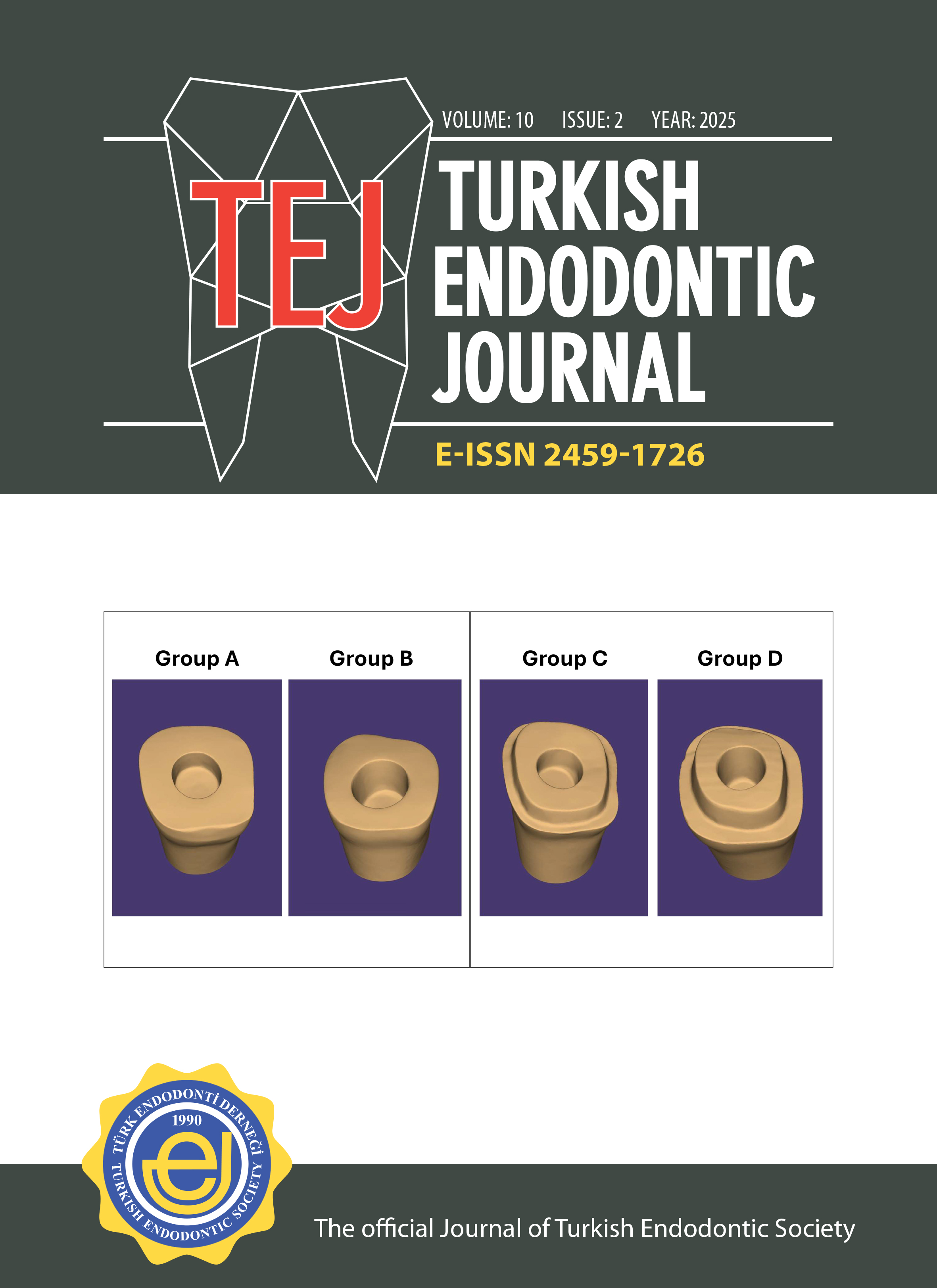Evaluation of fracture resistance in 3d-printed hybrid endocrowns with different preparation designs
İzim Türker Kader1, Safa Özer2, Burçin Arıcan31Department of Prosthodontics, Bahçeşehir University School of Dental Medicine, Istanbul, Türkiye2Dental Prosthesis Technology, Bahçeşehir University Vocational School of Health Services, Istanbul, Türkiye
3Department of Endodontics, Bahçeşehir University School of Dental Medicine, Istanbul, Türkiye
Purpose: This in vitro study aimed to evaluate and compare the fracture resistance and failure modes of 3D-printed ceramic-filled hybrid endocrowns with four distinct preparation designs, focusing on the mechanical performance and post-endodontic restorative management.
Methods: Forty-eight 3D-printed ceramic-filled hybrid endocrowns were fabricated on 3D-printed typodont molar dies simulating endodontically treated teeth and divided into four groups (n = 12) based on preparation designs: Group A (butt joint margin, 2 mm pulp chamber depth), Group B (butt joint margin, 4 mm depth), Group C (shoulder margin, 2 mm depth), and Group D (shoulder margin, 4 mm depth). After cementation, specimens were subjected to axial loading in a universal testing machine until failure. Fracture resistance values (N) were recorded, and failure patterns were classified under 18.4x magnification. Statistical analysis was performed using a Two-Way ANOVA test (α = 0.05).
Results: Shoulder margin designs demonstrated significantly higher fracture resistance compared to butt joint margins (p = 0.001), irrespective of pulp chamber depth. No significant differences were found between the 2 mm and 4 mm pulp chamber extensions (p = 0.393). Catastrophic (Type 4) failures were predominantly observed in Group C, while Groups A and B showed mainly repairable failure patterns.
Conclusion: Preparation design significantly affects the mechanical integrity of 3D-printed endocrowns for post-endodontic restoration. Shoulder margins enhance fracture resistance, although increasing pulp chamber depth does not confer additional mechanical benefits. These findings provide valuable insights for optimizing preparation strategies in the restorative management of endodontically treated posterior teeth.
Manuscript Language: English



















